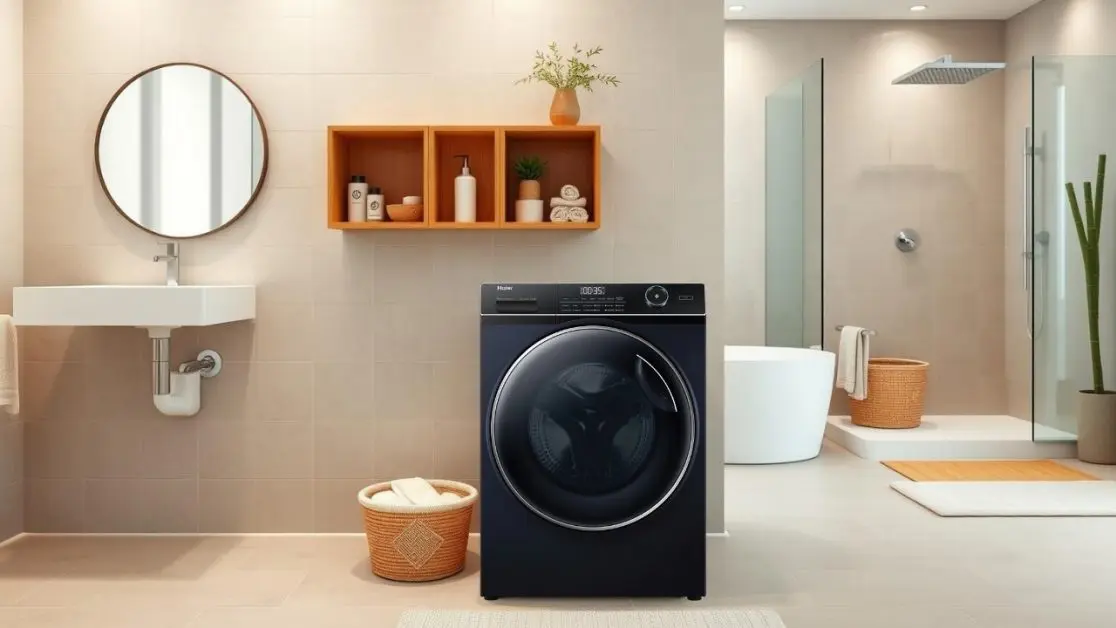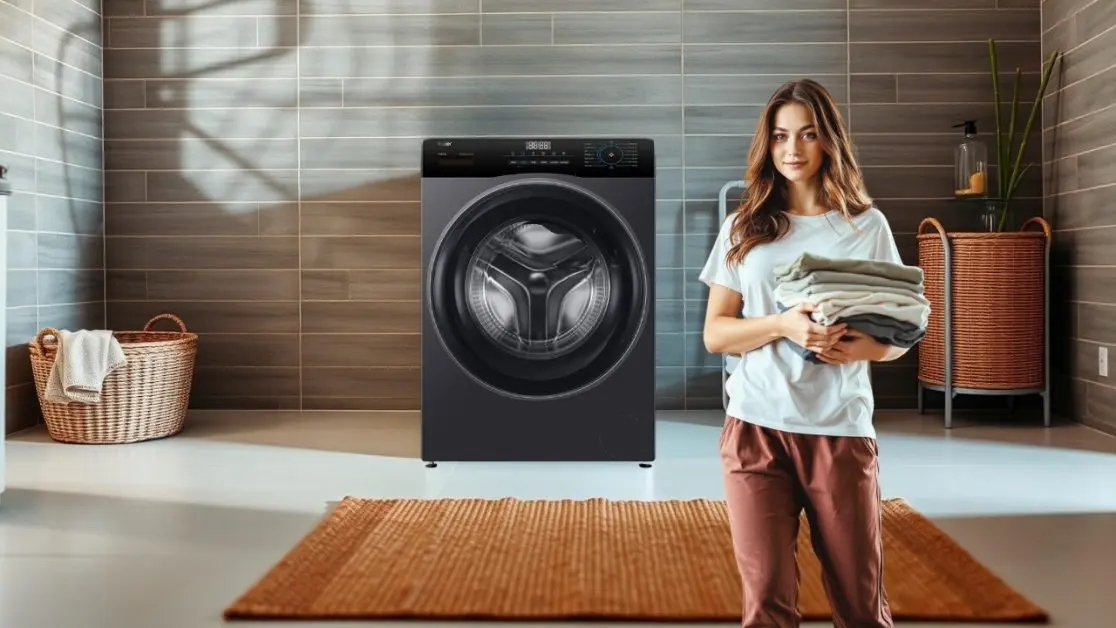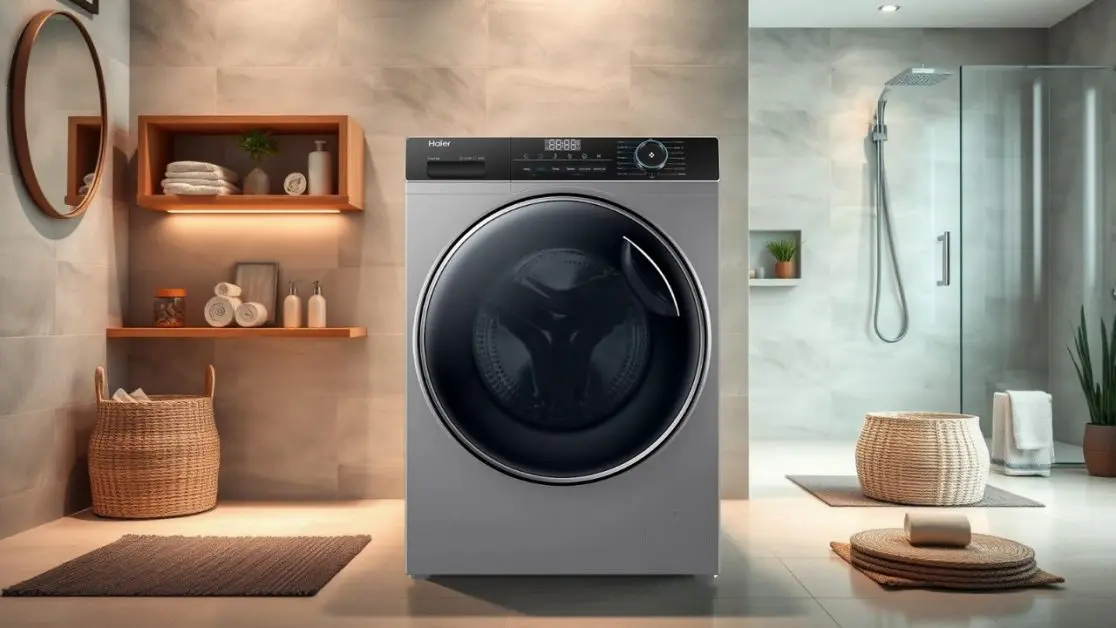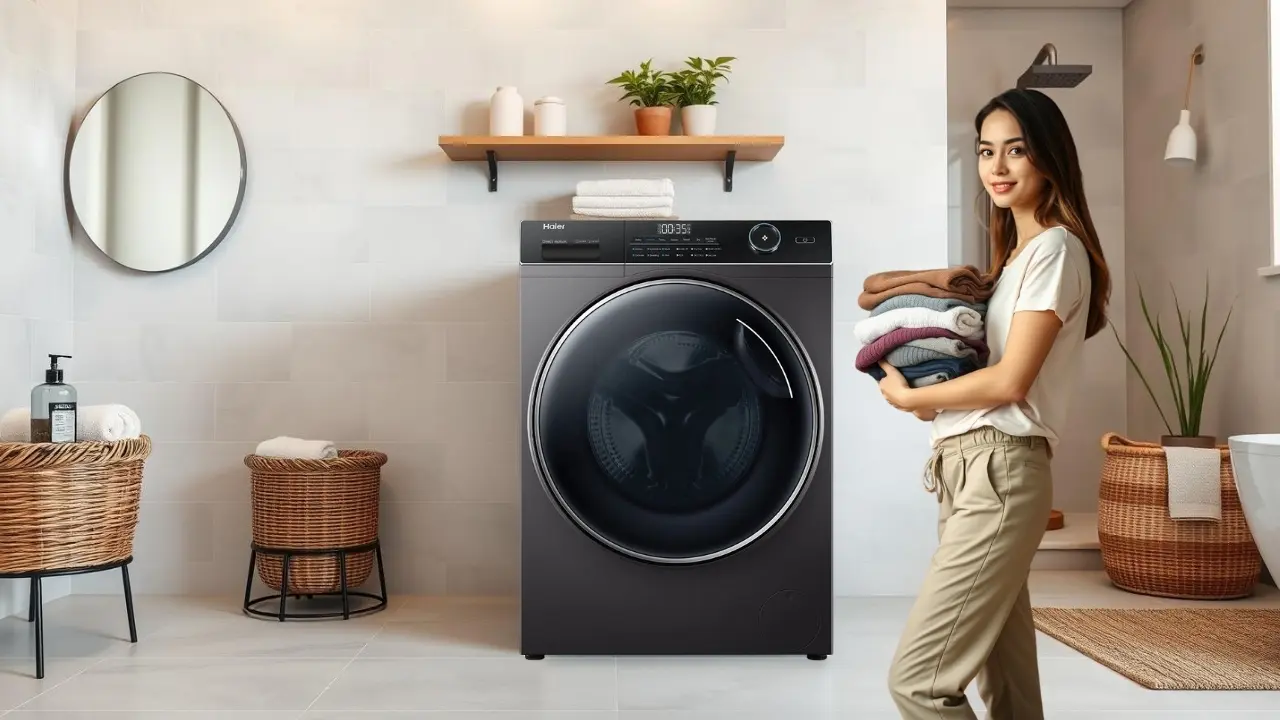Ever taken out the laundry only to discover that it’s still dirty in places? Or perhaps you’ve seen a washing machine go through a cycle with water spinning around and clothes not moving at all. In most cases, it’s not just the detergent or the water pressure. A washing machine’s capacity could be doing all the work.
Either way, in India, most nuclear and joint families have a washing machine, as almost every household has started depending on one to ease the laundry burden. But there are many factors to consider when washing the clothes and not only just switching on the machine.
The size or the capacity of the washer, which is measured in kilograms to make it easier, shall make quite a difference in the efficiency of the washing. Getting the capacity wrong could mean excess water, increased wash time, lower energy savings, and in the worst case, dirty laundry.
This article outlines the impact of washing machine capacity on cleaning efficiency, energy use, and fabric care. If you are considering upgrading your machine, or want to understand if your current model is tailored to your needs, the information provided is meant to equip you to make an educated decision.
Continue reading to learn how something as simple as capacity could transform everything concerning laundry care—and uncover which capacity may suit your household setup the best.
What Does Washing Machine Capacity Mean?
Washing machine capacity is usually expressed in kilograms (kg), which is the mass of the laundry that can properly fit into the drum. For context, a washing machine with a capacity of 6.5 kg is able to wash dry laundry amounting to a weight of 6.5 kg.
Here’s a rough outline:
| Machine Capacity | Ideal For | Example Load |
| 6–6.5 kg | Singles or couples | 3 shirts, 2 trousers, 1 bedsheet |
| 7–7.5 kg | Small Families (3–4 Members) | 4 shirts, 3 trousers, 1 towel, bedsheet |
| 8–9 kg | Medium to Large Families | 6 shirts, 4 trousers, towels, bedsheets |
| 10+ kg | Joint Families and Heavy Usage | Large blankets, multiple linens |
In this case, we refer to 7 kg as the average for small families and small household responsibilities. However, the numbers do not always tell everything; instead, understanding the performance of the machines will provide a better meaning.
The Impact of Capacity on Washing Efficiency

1. Load Arrangement and Washing Efficiency
High-capacity washing machines usually have high-capacity motors, large drums, and efficient water distribution systems. These machines also guarantee that there is enough tumbling space so that water and detergent can circulate freely and permeate every single fiber on the fabric.
Trying to overload a smaller unit may result in:
- Improper washing and rinsing due to lack of water flow
- Inadequate removal of dirt leading to stained fabrics
- Increased fabric and machine component damage over time
On the other hand, underfilling larger machines can result in excessive energy and water consumption. So, capacity should always be proportionate to the load.
2. Energy and Water Cost Savings
As some people assume, a larger machine does not equate to higher power and water consumption—if used properly.
Water and power usage is precisely adjusted according to the load with modern washers that install inverter technology and smart sensors. This implies that with a properly matched capacity, lower power and water usage is often encountered.
For instance, Haier washing machines are designed with smart timings for automatic water intake, wash duration, and spinning cycles relative to the weight of laundry. Consequently, it increases efficiency and effectiveness in performance-balanced capacity.
3. Cycle Time and Wash Quality
Larger capacity machines are built to accommodate bulkier items or multiple garments without compromising quality. A smaller capacity machine may be more suitable for a family that doesn’t frequently wash bed linens, curtains, or winter wear because less time is spent washing in multiple cycles.
The right capacity means reduced:
- Repetitive cycle necessities
- Drum and motor stress
- Fabric damage caused by friction due to overstuffing
Most Common Oversights While Selecting Washing Machine Capacity

Common household behavior indicates that other factors such as price, aesthetics, or brand loyalty are in the foreground, and capacity, for some reason, becomes secondary. Here are some of the most rampant oversights:
- Planning for future needs is often overlooked: Families grow or their laundry habits change over time. A machine suited for a couple may become inadequate in just a few years.
- Ignoring type of laundry: Households that frequently wash bulky items such as rugs and quilts almost always outsize ‘normal’ ones, hence require larger capacities.
- Bigger is always better: A 10 kg washing machine sounds ideal for many, but for a single person, it is not the most efficient choice, would it? There will be excess water and energy used for small loads.
How to Determine the Appropriate Capacity for Your Household Purposes
The appropriate capacity commences with understanding the user’s laundry patterns.
The following questions have been tailored for you:
- How many individuals reside in the household?
- What is the frequency of laundry doing? Every day or weekly?
- What type of clothes is done every day? Lightweight wear, towels, or bulky items?
- Do clothes get heavily soiled (as in from children or outdoor work)?
- Are bedsheets, uniforms, etc., separated to run different cycles?
Given these questions, this is what we recommend:
| Household Members | Washing Days in a Week | Recommended Capacity |
| 1–2 | 2–3 | 7–8 kg |
| 3–4 | Every alternate day | 8–9 kg |
| 5+ | Daily or with larger loads | 10+ kg |
Detailed Advantages and Disadvantages

This is a more straightforward version if the information is written this way.
BUDGET Laundry Washing Machines:
6–6.5 kg
Advantages
- Lower costs
- Higher durability
- Lower spending on water and power
Disadvantages
- Great if every cycle meets demands, but isn’t suitable if there are bulky items
- Requires frequent spins for families
Higher Capacity:
7–8 kg
Advantages
- Available for small to mid-sized households and can deal with moderate amounts
- Energy and water-efficient, but only if used intelligently
Disadvantages
- Suspended from use because it can’t be overwhelmed with too many large items at once
- Insufficient for family due to needing too many separate loads
Single Full Size:
9+ kg
Advantages
- Fulfills needs of large families
- Allows heavy items like duvets or curtains
- Can lower the number of loads needed
Disadvantages
- Higher upfront costs
- If regularly unused, don’t place full use of it due to wasting resources
Features That Improve Efficiency Regardless of the Level of Activity

The latest models of washing machines, especially those manufactured by Haier India, come with smart features that are helpful in performance enhancement wash for all capacities:
- Inverter Motors: Alter speed and energy consumption for the workload. This increases efficiency and extends life.
- Smart Weight Sensors: Determine the load and calculate the volume of water and detergent to be used.
- Quick Wash Programs: Best for time-bound loads or lightly soiled clothes. Saves time and power.
- Eco Modes: Designed to conserve resources while still maintaining quality of cleaning.
These are useful on the occasions when you are near the limit of the capacity or need a faster cycle, but still want optimal results.
Capacity Is Not Merely a Figure
In the sea of washing machines touting attractive designs and catchy phrases, it is easy to forget one of the most important metrics—Capacity. This is very important, indeed.
Capacity of the washing machine does not mean just how much laundry can be loaded into the machine. It’s about the assurance that clothes are properly laundered, the machine is not overworked, and energy is not wasted. The right capacity can mean the difference between fresh, clean clothes or extremely aggravating do-overs. It enables long-term savings in energy expenses, as well as prolonging the lifespan of the washing machine.
Looking for a More Efficient Way to Deal with Your Laundry?
When moving into a new home or renovating one, purchasing a washing machine that fits with the household requirements will make laundry chores easier.
With the advancement of technology, Haier has made washing machines with intelligent features that optimize each wash. From small urban flat models to large family versions, they have a wide range that includes sensor-based load detection, advanced inverter motors, and eco-friendly programs.
Now you can conveniently enjoy every wash along with outstanding performance.
Visit Haier India today and browse through their collection of washing machines to find one that works best for you.

